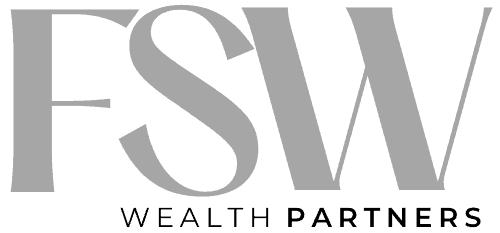Financial Products
DISCOVER
Financial Products
Separately Managed Accounts (SMAs)
A professional portfolio manager crafts a personalized portfolio of stocks, bonds, or ETFs specifically for you, so you directly own each security.
You get full transparency of holdings and fees, custom tax strategies (like tax-loss harvesting), and the freedom to exclude industries that may not align with your financial goals or personal values.
Exchange Traded Funds (ETFs)
They mimic sectors, themes, or asset types, and typically come with low management fees – they are efficient and straightforward.
Investment Pools
Pooling provides access to bigger, diversified strategies, even with modest investments.
Registered Retirement Savings Plan (RRSP)
An RRSP is a registered account designed to help you save for retirement in a tax-efficient way.
You can hold a variety of investments in an RRSP—such as mutual funds, stocks, bonds, and GICs—and your contributions and growth are treated favorably under Canadian tax law.
- Contributions are tax-deductible, reducing your taxable income for the year they’re made
- Investments grow tax-deferred, meaning you don’t pay tax on interest, dividends, or capital gains while the funds remain in the plan
- Withdrawals are fully taxable as income in the year they’re taken, typically they are redeemed in retirement, when your tax rate may be lower
Tax Rules & Considerations
- Annual contribution limits are set by the federal government (e.g., 18% of prior year’s income, up to an annual maximum)
- Unused contribution room carries forward
- Over-contributions may result in a 1% monthly penalty
- RRSPs must be converted to a RRIF or annuity by the end of the year you turn 71
- Withdrawals made before retirement are taxed and may be subject to withholding tax, unless made under specific programs (e.g., Home Buyers’ Plan or Lifelong Learning Plan)
Registered Retirement Income Fund (RRIF)
By the end of the year you turn 71, your RRSP must be converted to a RRIF, and minimum annual withdrawals begin the following year.
Your money remains invested and continues to grow, even as you begin drawing a steady, tax-deferred income.
Prescribed RRIF (PRIF)
With no mandatory minimum withdrawal amounts, you control exactly how much and when to take income.


Registered Education Savings Plan (RESP)
A RESP is a dedicated growth account that helps you save for a child’s post-secondary education, with a government match.
Government grant: The federal Canada Education Savings Grant (CESG) adds 20% of annual contributions, up to $2,500, so you can receive up to $500/year, to a lifetime maximum of $7,200 per beneficiary.
No annual contribution cap, but the lifetime limit is $50,000 per child.
Tax-efficient growth: Your investments grow tax-deferred until withdrawal, and grants and earnings are taxed in the student’s name, typically at a lower income tax rate.
Registered Disability Savings Plan (RDSP)
An RDSP is a long-term savings plan designed specifically for individuals with disabilities and have been approved for the disability tax credit.
It includes government grants and bonds and offers tax-deferred growth, helping build future security.
Contribution Rules
- Lifetime contribution limit: $200,000 (per beneficiary)
- No annual contribution limit, but contributions must stop by the end of the year the beneficiary turns 59
- Contributions are not tax-deductible
Government Grants & Bonds Canada Disability Savings Grant (CDSG):
- Matches contributions up to 300%, depending on family income
- Maximum grant: $3,500/year, $70,000 lifetime
- Grants and bonds are only available until the end of the year the beneficiary turns 49
Canada Disability Savings Bond (CDSB):
- Designed for lower-income families; no personal contributions needed
- Up to $1,000/year, $20,000 lifetime
Locked-In Retirement Account (LIRA)
A LIRA holds pension funds from a former employer when you leave a job with a registered pension plan.
It’s designed to preserve that money for retirement—you can’t contribute new funds, and early withdrawals aren’t allowed in most cases.
Your investments grow tax-deferred, and when you reach retirement age, the funds are usually transferred to a Life Income Fund (LIF) or annuity to begin generating income.
Withdrawal Rules
- Withdrawals are generally not allowed until at least age 55 (varies by province).
- Funds must be converted to a LIF or annuity by the end of the year you turn 71.
- Early access is only possible in special circumstances such as financial hardship or shortened life expectancy and is subject to strict conditions.
Life Income Fund (LIF)
Tax-Free Savings Account (TFSA)
A TFSA is a flexible, registered account that allows you to earn interest, dividends, or capital gains completely tax-free.
While contributions are not tax-deductible, all growth and withdrawals are tax-free for life.
You can hold a wide range of investments in a TFSA, and access funds at any time with no tax impact.
It is a versatile tool for both short-term savings and long-term goals.
Key Rules
- The annual contribution limit is set by the federal government (e.g., $7,000 for 2024)
- Unused room carries forward indefinitely
- Withdrawals can be re-contributed, but only starting the next calendar year
- Over-contributions are subject to a 1% monthly penalty

First Home Savings Account (FHSA)
The FHSA is a registered account designed to help you save for your first home, combining the tax advantages of both an RRSP and a TFSA.
Key Benefits
- Contributions are tax-deductible, like an RRSP
- Withdrawals are tax-free when used to purchase your first qualifying home
- Investment growth inside the account is tax-free
Contribution Rules & Eligibility
- Contribute up to $8,000 per year, to a lifetime maximum of $40,000
- Unused room carries forward
- You must be a first-time homebuyer and a Canadian resident
- Funds must be used to buy a home within 15 years of opening the account or age 71, whichever comes first, or be transferred to an RRSP/RRIF
Home Equity Line of Credit (HELOC)
A HELOC is a revolving line of credit secured by the equity in your home.
It allows you to borrow money as needed up to an approved limit, and repay it on your own schedule, much like a credit card.
You only pay interest on the amount you use, and interest rates are typically lower than unsecured loans.
Funds can be used for large expenses, investment opportunities, renovations, or as part of a broader cash flow strategy.
Key Considerations
- Your home acts as collateral, so failure to repay could put your property at risk
- Interest is not tax-deductible unless the funds are used for investment or income-generating purposes (refer to your accountant for tax advice)
- Most HELOCs have variable interest rates, so payments may fluctuate
Non‑Registered Accounts (Canadian & U.S.)
They offer full flexibility and can hold both Canadian and U.S. assets, ideal for goals outside the registered-plan space.
Guaranteed Income Funds (GIFs)
They offer market exposure with guarantees, such as minimum income or principal protection— making them a good option for stable, predictable retirement income for conservative investors.
Annuities
An annuity is a contract with a life insurance company that converts a lump sum of money into a guaranteed stream of income, typically monthly payments for a set period over your lifetime.
Annuities are often used in retirement to provide a predictable, stable income that remains unaffected by market fluctuations.
You can choose between term-certain annuities (which pay income for a fixed number of years) and life annuities (which pay for as long as you live).
Some annuities include features such as inflation protection or survivor benefits, depending on your needs.
Tax Considerations
- If purchased with non-registered funds, a portion of each payment is taxable income
- If purchased within a registered plan (like an RRSP or RRIF), the full income is taxable when received
- Once purchased, annuities are not liquid – you cannot access or withdraw the lump sum
High-Interest Savings Accounts (HISAs)
It’s typically used for emergency funds, near-term goals, or as a temporary holding place for cash within a broader investment plan, earning more interest than a traditional savings account while preserving liquidity in your portfolio.
Guaranteed Investment Certificate (GIC)
A GIC is a low-risk investment that guarantees both your original deposit and a fixed rate of return over a set period, typically from a few months to five years.
It is a good option if you want stability and guaranteed growth.
Key Features
- Your principal is guaranteed, and you earn interest at a set rate
- No market exposure – your return is fixed, and your principal is fully protected
- Terms range from short to long, depending on your needs
- Some GICs are cashable early, but most require you to hold until maturity
Tax Considerations
- Interest earned on a GIC is taxable in the year it’s earned, unless the GIC is held inside a registered account (like a TFSA or RRSP)

